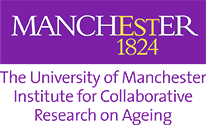The role of community assets in improving health and well-being in later life
9 June 2017
Policymakers across the world are becoming increasingly interested in improving health and well-being by creating a more inclusive community-based society. In 2010, the UK government stressed the need for a ‘Big Society’; one where individuals engage more with the facilities in their local community. The aim was to reduce inequalities and improve health and well-being, with a focus on localism, devolution, volunteerism and social enterprise.
One important aspect of the Big Society was ‘Community Assets’. A community asset is: “…the collective resources which individuals and communities have at their disposal, which protect against negative health outcomes and promote health status”. Examples of community assets include charity, voluntary or community groups. These community assets can lead to an increase in social inclusion and a decrease in loneliness, which have both been associated with better health.
In this afternoon of short talks, we will hear the academic theory and evidence which supports a community asset approach, alongside some real examples of where this is taking place in Salford. We will finish by presenting evidence, based on the CLASSIC cohort, on the effectiveness of community assets at improving health and well-being, and leading to a net societal benefit.
Chair
- Prof Matt Sutton – Professor of Health Economics, University of Manchester
Speakers
- Prof Pete Bower – Professor of Health Services Research, University of Manchester
- Bernadette Elder – Chief Executive Officer of Inspiring Communities Together
- Dr Luke Munford – Research Fellow in Health Economics, University of Manchester
Event outputs
- Role of Community Assets in supporting good health and wellbeing - Bernadette Elder (PowerPoint, 2.8MB)
- Participation in Community Assets and Health-Related Quality of Life and Health Care Utilisation Amongst Older People - Luke Munford (PowerPoint, 411KB)
- Social Prescribing: Less rhetoric and more reality - Paul Wilson (PowerPoint, 183KB)
